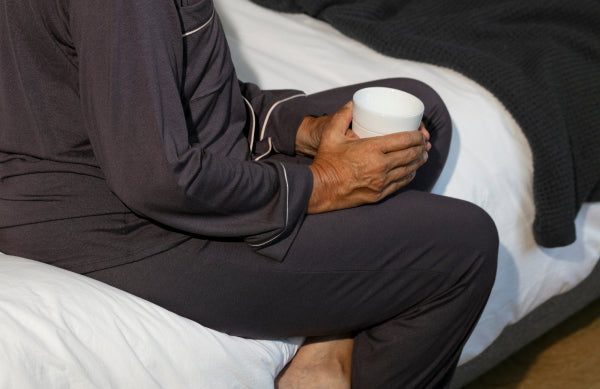Overactive bladder (OAB) and nocturia, characterized by frequent urination during the night, can significantly disrupt your sleep and overall quality of life. These urinary concerns often lead to disturbances in sleep patterns, affecting not only physical health but also mental well-being. In this article, we will explore how your sleeping position can impact these conditions and provide insights into the best sleeping positions for managing overactive bladder and achieving a good night's sleep.
- The link between overactive bladder and Nocturia
- Impact of sleep disorders on OAB
- The role of sleeping positions
- Incorporating lifestyle changes
- Additional resources
The Link Between Overactive Bladder and Nocturia
Overactive bladder, often abbreviated as OAB, is a medical condition that involves an urgent and frequent need to pass urine. Nocturia, a common symptom of OAB, refers to the need to wake up multiple times during the night to urinate. This condition is often triggered by various factors, including diuretics, urinary tract infections (UTIs), and even certain health conditions like heart disease and high blood pressure. The pelvic floor muscles, responsible for controlling the urinary tract, play a crucial role in managing OAB and urinary incontinence.
Impact of Sleep Disorders on OAB
Sleep disorders like obstructive sleep apnea can exacerbate overactive bladder symptoms, further affecting your sleep quality. Additionally, mental health factors and lifestyle changes, such as obesity and fluid intake, can contribute to the severity of OAB and nocturia. Seeking medical advice from a urologist or healthcare professional is essential to address these concerns comprehensively.
The Role of Sleeping Positions
Believe it or not, your choice of sleeping position can influence the frequency and urgency of bathroom trips during the night. Opting for the right position can alleviate pressure on the bladder muscles and pelvic floor, leading to fewer disruptions and a better night's sleep.
Best Sleeping Positions for Overactive Bladder and Nocturia
- The Left Side Position: Sleeping on your left side allows gravity to aid the bladder in emptying more efficiently. This position can also reduce pressure on the pelvic floor muscles, making it an ideal choice for those with OAB and nocturia.
- The Semi-Fetal Position: Curling up slightly with your knees drawn towards your chest can help relax the pelvic floor muscles and reduce pressure on the bladder. This position may also alleviate back pain, which is common among those with OAB.
- The Back-to-Back Position: If sleeping with a partner, lying back-to-back with a pillow between your knees can provide comfort and support to your pelvic floor while preventing pressure on the bladder.
- The Pillow Support Position: Placing a pillow or cushion under your knees while lying on your back can elevate your legs slightly, promoting better blood circulation and reducing pressure on the bladder.
- Avoid Stomach Sleeping: Sleeping on your stomach can strain the pelvic floor muscles and increase pressure on the bladder, potentially worsening OAB symptoms.
Incorporating Lifestyle Changes
Apart from optimizing your sleeping position, lifestyle modifications can also contribute to managing OAB and nocturia. Practicing Kegel exercises to strengthen your pelvic floor muscles, managing fluid intake in the evening, and avoiding diuretics close to bedtime can help minimize nocturnal bathroom trips.
Conclusion
Overactive bladder and nocturia can significantly impact your sleep quality and overall well-being. By understanding the relationship between your sleeping position and urinary concerns, you can make informed choices that contribute to a better night's sleep. Remember to consult a healthcare professional or urologist to explore comprehensive treatment options and receive personalized advice tailored to your specific needs. Prioritizing both your physical and mental health will pave the way for improved sleep and an enhanced quality of life.
Want to learn more about best sleeping positions for overactive bladder?
-Step By Step Guide to At Home Pelvic Floor Therapy (For All Ages)
-Signs of a Weak Pelvic Floor and Prevention
